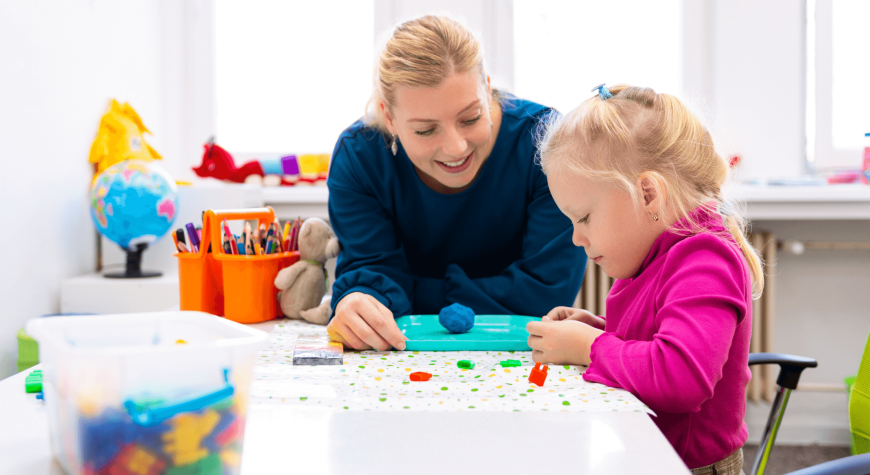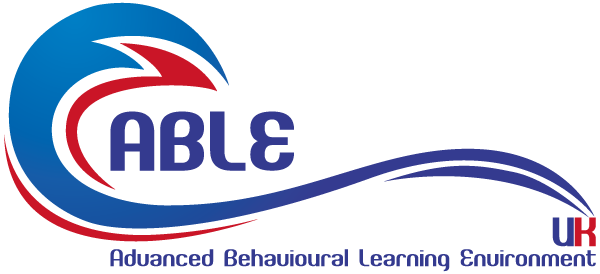The Role of Occupational Therapy in Child Development

Imagine your child, building sandcastles on the pristine beaches of Dubai. They meticulously sculpt towers, dig moats, and decorate their creation with colourful seashells. But what if simple tasks like holding a shovel or coordinating hand movements prove challenging?
Occupational therapy might sound like something only adults need, but it’s a vital part of many children’s lives too. Occupational therapy plays a crucial role in helping children achieve their full potential. By focusing on improving the skills needed for daily life, occupational therapy empowers children to overcome their difficulties and thrive.
In this article, we will explain the concept of occupational therapy in details and share insights on its profound impact on child development, and why it might be just what your child needs.
What is Occupational Therapy?
Occupational therapy helps people of all ages to do the things they need and want to do through the therapeutic use of daily activities (occupations). For children, these “occupations” are usually playing, learning, and growing. The goal is to help them develop the skills they need to perform their daily activities successfully and independently.
The essence of occupational therapy is enhancing the ability to perform everyday tasks. It addresses physical, psychological, and social aspects, making it a holistic approach to child development. Therapists work on fine motor skills, sensory processing, and even social skills, tailoring their methods to each child’s unique needs.
How Occupational Therapy Supports Child Development
Child with developmental delays present with all sorts of challenges which can benefit from occupational therapy. Here are some of the ways in which occupational therapy can support your child;
- Enhancing Fine Motor Skills:Fine motor skills are essential for tasks like writing, buttoning a shirt, or using utensils. Children who struggle with these skills often face challenges in school and daily life. Occupational therapists use a variety of activities to strengthen these skills, from play-based interventions to specific exercises.
- Improving Sensory Processing: Some children have difficulty processing sensory information, which can lead to challenges in behaviour and learning. Occupational therapists use sensory integration techniques to help children make sense of the world around them. This might involve activities that focus on touch, movement, and balance to help children respond more appropriately to sensory inputs.
- Boosting Social Skills:Social interactions are a crucial part of child development, but not all children find it easy to make friends or engage in group activities. Occupational therapy can help by teaching children how to interact more effectively with others. This can include role-playing scenarios, group activities, and other social skills training.
- Promoting Independence:One of the primary goals of occupational therapy is to help children become more independent. This means enabling them to perform daily tasks without assistance, from dressing themselves to organizing their schoolwork. Occupational therapists work closely with children to build these skills step by step.
Techniques Used for Occupational Therapy
Some of the tools and techniques used by occupational therapists are summarized in the table below;
| Techniques | Description | Tools | Examples |
| Sensory Integration Therapy | Helps children process and respond to sensory information more effectively. | Sensory toys, weighted blankets, swings | Weighted vests, tactile toys, therapy balls |
| Fine Motor Skills Development | Focuses on improving hand-eye coordination and dexterity. | Pegboards, threading beads, scissors | Beading activities, puzzles, cutting exercises |
| Gross Motor Skills Development | Enhances overall body movement and coordination. | Balance beams, therapy balls, obstacle courses | Jumping, climbing, balance exercises |
| Cognitive Behavioral Therapy | Addresses emotional and psychological challenges. | Visual schedules, social stories | Emotion cards, behavior charts, role-playing |
| Activities of Daily Living (ADLs) | Teaches essential self-care tasks such as dressing, eating, and grooming. | Adaptive utensils, dressing aids, visual aids | Button hooks, special cutlery, step-by-step visual guides |
| Play Therapy | Uses play to promote development and address psychological issues. | Toys, games, art supplies | Dollhouses, board games, drawing materials |
| Handwriting Improvement | Helps children develop legible and efficient handwriting skills. | Special paper, pencil grips, handwriting programs | Handwriting Without Tears program, lined paper, ergonomic writing tools |
| Social Skills Training | Develops interpersonal skills through structured activities and role-playing. | Social stories, interactive games | Group activities, peer interaction exercises, communication boards |
| Assistive Technology | Uses specialized devices and software to aid learning and communication. | Tablets, communication apps, adaptive keyboards | Proloquo2Go, speech-to-text apps, alternative and augmentative communication (AAC) devices |
| Visual-Motor Integration | Combines visual perception and motor skills to improve activities like reading and writing. | Puzzles, mazes, tracing worksheets | Dot-to-dot activities, maze games, tracing and copying exercises |
| Sensory Diet | Personalized activity plan to provide the sensory input a child needs to stay focused and organized throughout the day. | Various sensory tools | Scheduled sensory breaks, fidget toys, textured surfaces |
| Emotional Regulation Techniques | Helps children manage and express their emotions appropriately. | Stress balls, calming jars, breathing exercises | Deep breathing exercises, mindfulness activities, emotion identification tools |
| Adaptive Strategies | Provides modifications to tasks and environments to help children succeed. | Adaptive seating, modified tools | Slant boards for writing, adapted scissors, non-slip mats |
| Task Analysis | Breaks down complex tasks into smaller, manageable steps to teach children how to perform them independently. | Step-by-step visual aids, checklists | Brushing teeth sequence charts, dressing routines, cooking step-by-step instructions |
| Collaborative Goal Setting | Involves children, parents, and teachers in setting realistic and achievable goals tailored to the child’s needs and progress. | Goal charts, progress tracking tools | Individualized Education Program (IEP) goals, progress monitoring sheets, goal-setting worksheets |
Frequently Asked Questions About Occupational Therapy
What Age Should a Child Start Occupational Therapy?
There’s no one-size-fits-all answer, as it depends on the child’s specific needs. Early intervention, typically before the age of three, can be incredibly beneficial. However, children of any age can benefit from occupational therapy if they have developmental delays or challenges.
How Long Does Occupational Therapy Take?
The duration of occupational therapy varies widely. Some children may only need a few months of therapy, while others might benefit from ongoing support for several years. The key is to focus on the child’s progress and adjust the therapy plan as needed.
Is Occupational Therapy Covered by Insurance?
Many insurance plans do cover occupational therapy, but it’s essential to check with your provider for specifics. Some services might require a referral from a doctor, while others might be covered under general health benefits.
How Can I Tell if My Child Needs Occupational Therapy?
If your child struggles with everyday tasks, such as dressing, feeding themselves, or playing with other children, it might be worth consulting an occupational therapist. Teachers, paediatricians, and other parents can also be valuable resources in identifying potential needs for therapy.
Occupational therapy plays a pivotal role in child development, addressing a wide range of challenges that can hinder a child’s ability to thrive. Whether it’s enhancing fine motor skills, improving sensory processing, boosting social interactions, or promoting independence, OT offers a holistic approach to helping children succeed.
By focusing on individual needs and fostering independence, occupational therapy not only helps children grow but also empowers them to face the world with confidence and capability. And who knows? This journey of growth and development might just be as transformative for you as it is for your child.

One Comment
uw99my
December 5, 2025 @ 10:35 pmUW99my… Malaysia represent! Let’s see what this is. Always good to support local platforms. Hope the promos are good! uw99my